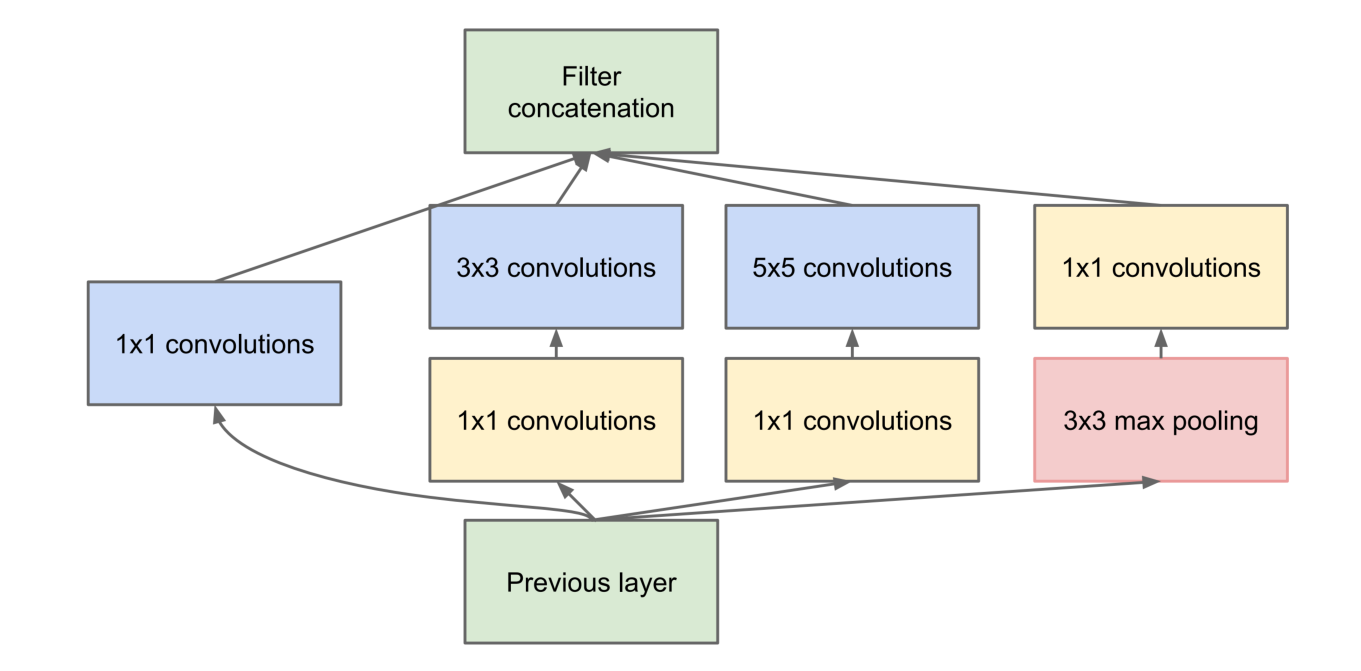1
2
3
4
5
6
7
8
9
10
11
12
13
14
15
16
17
18
19
20
21
22
23
24
25
| def get_symbol(num_classes = 1000):
data = mx.sym.Variable("data")
conv1 = ConvFactory(data, 64, kernel=(7, 7), stride=(2,2), pad=(3, 3), name="conv1")
pool1 = mx.sym.Pooling(conv1, kernel=(3, 3), stride=(2, 2), pool_type="max")
conv2 = ConvFactory(pool1, 64, kernel=(1, 1), stride=(1,1), name="conv2")
conv3 = ConvFactory(conv2, 192, kernel=(3, 3), stride=(1, 1), pad=(1,1), name="conv3")
pool3 = mx.sym.Pooling(conv3, kernel=(3, 3), stride=(2, 2), pool_type="max")
in3a = InceptionFactory(pool3, 64, 96, 128, 16, 32, "max", 32, name="in3a")
in3b = InceptionFactory(in3a, 128, 128, 192, 32, 96, "max", 64, name="in3b")
pool4 = mx.sym.Pooling(in3b, kernel=(3, 3), stride=(2, 2), pool_type="max")
in4a = InceptionFactory(pool4, 192, 96, 208, 16, 48, "max", 64, name="in4a")
in4b = InceptionFactory(in4a, 160, 112, 224, 24, 64, "max", 64, name="in4b")
in4c = InceptionFactory(in4b, 128, 128, 256, 24, 64, "max", 64, name="in4c")
in4d = InceptionFactory(in4c, 112, 144, 288, 32, 64, "max", 64, name="in4d")
in4e = InceptionFactory(in4d, 256, 160, 320, 32, 128, "max", 128, name="in4e")
pool5 = mx.sym.Pooling(in4e, kernel=(3, 3), stride=(2, 2), pool_type="max")
in5a = InceptionFactory(pool5, 256, 160, 320, 32, 128, "max", 128, name="in5a")
in5b = InceptionFactory(in5a, 384, 192, 384, 48, 128, "max", 128, name="in5b")
pool6 = mx.sym.Pooling(in5b, kernel=(7, 7), stride=(1,1), pool_type="avg")
flatten = mx.sym.Flatten(data=pool6)
fc1 = mx.sym.FullyConnected(data=flatten, num_hidden=num_classes)
softmax = mx.symbol.SoftmaxOutput(data=fc1, name='softmax')
return softmax
|
